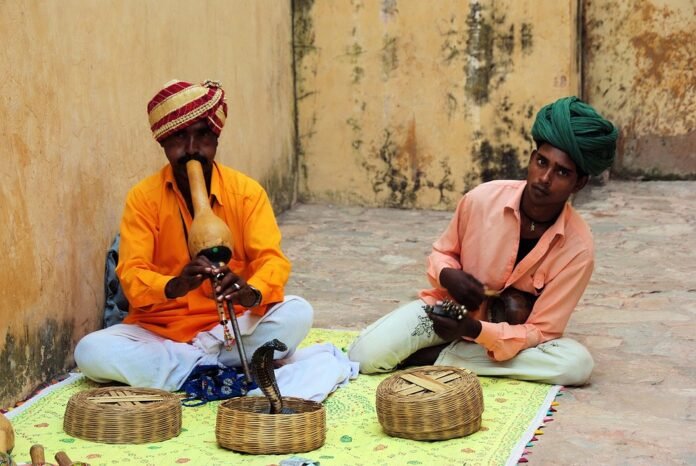Of course! Here is an article about the hidden gems of India.
Hidden Gems of India: Unveiling the Country’s Best-Kept Secrets
When you think of India, your mind might conjure images of the majestic Taj Mahal, the bustling markets of Delhi, or the sun-drenched beaches of Goa. While these destinations are iconic for a reason, they represent just one layer of a country that is infinitely deep, diverse, and full of surprises. Beyond the well-trodden tourist trails lies another India—a land of secluded valleys, ancient ruins, and vibrant cultures waiting to be discovered.
If you’re a traveler who craves authenticity over crowds and serenity over spectacle, it’s time to explore the subcontinent’s best-kept secrets. These hidden gems offer a glimpse into the soul of India, far from the tourist throngs.
1. Gandikota, Andhra Pradesh: The Grand Canyon of India
Forget Arizona for a moment. Tucked away in the southern state of Andhra Pradesh is a breathtaking gorge carved by the Penna River that has earned the nickname "The Grand Canyon of India." Gandikota is a stunning landscape of sheer red cliffs, deep valleys, and the tranquil river flowing below.
- Why it’s a gem: The sheer, unexpected scale of the canyon is awe-inspiring. It’s not just a natural wonder; perched on the edge of the gorge is the historic Gandikota Fort, a 13th-century fortress with ancient temples, a mosque, and granaries. You can wander through these forgotten ruins, feeling like an explorer discovering a lost world. The sunsets here, casting a warm, golden glow over the rust-colored rocks, are simply magical.
- Best time to visit: September to February, when the weather is pleasant.
2. Majuli, Assam: The World’s Largest River Island
Imagine an island not in an ocean, but in the middle of a mighty river. Majuli, nestled in the Brahmaputra River in Assam, is the world’s largest river island and a hub of unique Neo-Vaishnavite culture. This is a place where time seems to slow down. Life revolves around rice paddies, fishing, and ancient monasteries known as Satras.
- Why it’s a gem: Majuli offers a peaceful retreat and a deep cultural immersion. You can rent a bicycle and pedal through lush green landscapes, visit the Satras to witness monks practicing traditional music and dance, and watch artisans craft intricate masks. The island is also a biodiversity hotspot, perfect for birdwatching. Be aware, this fragile ecosystem is threatened by erosion, making a visit here both a privilege and a poignant experience.
- Best time to visit: October to March, after the monsoons and before the peak summer heat.
3. Bundi, Rajasthan: The City of Stepwells
While tourists flock to Jaipur and Udaipur, the charming town of Bundi in Rajasthan remains blissfully under the radar. Dominated by the magnificent, slightly crumbling Bundi Palace and Taragarh Fort, this small city is a labyrinth of blue-walled houses, bustling bazaars, and, most famously, its ornate stepwells (baoris).
- Why it’s a gem: Bundi feels like stepping back in time. It lacks the commercial polish of its larger counterparts, offering a more authentic Rajasthani experience. The town is home to over 50 stepwells, with the intricately carved Raniji ki Baori being the most famous. The Bundi Palace itself houses some of the finest, yet fading, murals in the region. It’s a photographer’s and historian’s dream.
- Best time to visit: October to March.
4. Zanskar Valley, Ladakh: The Land of Stark Beauty
For the truly adventurous soul, the Zanskar Valley is the ultimate prize. Geographically isolated in a corner of Ladakh, this high-altitude desert is a realm of lunar landscapes, turquoise rivers, and ancient Buddhist monasteries that cling precariously to cliffs.
- Why it’s a gem: Zanskar is remote, raw, and profoundly beautiful. In summer, it’s a trekker’s paradise with trails leading through remote villages and over high mountain passes. In winter, it becomes legendary for the "Chadar Trek," a perilous but breathtaking journey walking over the frozen Zanskar River. The sense of isolation and the powerful spirituality of its monasteries, like Phuktal Gompa which is built into a cave, provide an experience that is both humbling and exhilarating.
- Best time to visit: June to September for summer access. January to February for the Chadar Trek.
5. Gokarna, Karnataka: Goa’s Spiritual Cousin
Once known only to pilgrims and intrepid backpackers, Gokarna is the perfect antidote to the commercialism of Goa. This coastal town in Karnataka is a unique blend of sacred pilgrimage site and laid-back beach haven. The town itself is centered around the ancient Mahabaleshwar Temple, but a short hike over the headlands reveals a string of pristine beaches.
- Why it’s a gem: Gokarna offers the best of both worlds. You can experience the spiritual energy of a holy town in the morning and relax on a secluded beach in the afternoon. Beaches like Om Beach, Half Moon Beach, and Paradise Beach are connected by scenic trails and offer a rustic, tranquil vibe that is hard to find elsewhere. It’s the ideal place to practice yoga, read a book, and simply disconnect.
- Best time to visit: October to March.
A Call to Responsible Exploration
Discovering these hidden gems comes with a responsibility. These are fragile places, both culturally and environmentally. When you visit, tread lightly. Support local economies by hiring local guides, staying in homestays, and buying handicrafts. Respect customs, ask before taking photographs, and, most importantly, leave no trace behind.
India’s true magic lies not just in its famous monuments but in the quiet corners and whispered legends. So, on your next journey, dare to step off the beaten path. The India you find there might just be the one that captures your heart forever.

